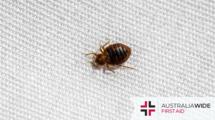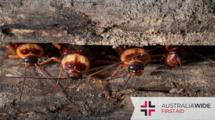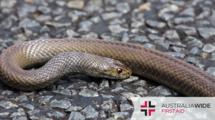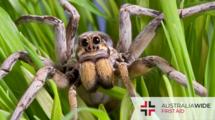Spider Facts: The Garden Orb Weaving Spider

With over 100 known species scattered across Australia, theGarden orb weaving spideris a common backyard spider in many Australian homes.
Known as ‘backyard master builders’, these hardworking spiders are renowned for their intricate ‘orb’ shaped webs that are used to catch flying insects.
All about the Garden orb weaving spider
Native to Australia, the garden orb weaving spider is a very common species belonging to theAraneidae family. The mostcommonspecies of garden orb weaving spiders are theEriophoria biapicataandE. transmarinafrom eastern and southern Australia. These spiders are known for their复杂的网that are suspended high in the air to catch flying insects by intersecting their flight patterns.
The most fascinating thing about Garden orb weaving spiders is the sheer size of their webs, which can extend from one tree to another. When building their webs, the Garden orb weaving spider will firstly find ahigh vantage point释放出源源不断的of silk. Because this silk is so light, it is carried by and floats on the wind until it snags against a solid object. The spider then rinses and repeats this step until the web is strong enough to support its weight while it builds the rest of the web. Despite the hard work they put into each web, Garden orb weaving spiders remove their web at dawn each day and create another one to avoid predators during the night.
The garden orb weaving spider is present all season, though their lifespan is a mere 12 months. Female spiders tend to lay their eggs in late summer to autumn. Most often, these eggs hatch in autumn into little spiderlings that use small silk strands as‘balloons’to be carried off by the wind. These spiderlings then build their own tiny orb webs among shrubbery to wait out the cold weather. Finally, during the summer months, they mature into adults and begin mating and laying eggs, thus restarting the whole cycle.
Identifying a Garden orb weaving spider
Garden orb weaving spiders tend to be stout andreddish-brownor grey in colour, and they have a leaf-shaped pattern on their abdomen. As there are roughly 100 known species of Garden orb weaving spiders originating from Australia, this pattern may vary from one spider to the next. The abdomen itself is often triangular in shape and has two noticeable humps towards the front.
While all variations cannot be listed here, below is a list of common identifiers of the Garden orb weaving spider:
- Adults are roughly 15 to 30 mm in body length
- Female spiders are typically larger than their male counterparts and have a body length of 20 to 25 mm; males, meanwhile, are generally 15 to 17 mm long
- Female spiders are distinguished by their needle-like epigynum (external genital structure of female spiders), which protrudes in the direction of the spinnerets, the silk-spinning organ of a spider
- Abdomens are triangular, bulbous, and covered in fine hairs
Garden orb weaving spiders and their hunting habits
Garden orb weaving spiders can often be found resting in the centre of their intricate webs. Their webs are typicallywheel-shapedand built between trees and shrubs, places where insects are likely to fly. When an insect gets caught in one of these wheel-shaped webs, it sends a vibration to the waiting spider. The spider then rushes towards the insect to quickly wrap it in silk, before biting it, envenomating it, and finally consuming it once dead. When food is plentiful, Garden orb weaving spiders will release any large insects that may damage their web.
Garden orb weaving spiders commonly prey onsmall flying insects, including flies, beetles, mosquitoes, cicadas, and dragonflies. They also like feeding on butterflies and moths – however, these insects have scales on their wings that they can shed, and so can free themselves from sticky webs. Common predators of the Garden orb weaving spider, meanwhile, includes wasp and birds – namely,honeyeaters.
花园orb编织蜘蛛讨厌吗erous to humans?
Though their bites do contain venom, Garden orb weaving spiders are quiteharmlessto humans. They are generally very shy and have a nonaggressive nature, and so only tend to bite when provoked. Likewise, their venom hasno impacton people, save for some mild pain and swelling around the bite site. Some people may also experience nausea after being bitten by a Garden orb weaving spider.

First aid for Garden orb weaving spider bite
As with all spider bites, it's important to know first aid for a Garden orb weaving spider bite:
- Reassure the casualty and keep them under constant observation.
- Apply a cold compress to the bite site for periods of up to 20 minutes to lessen the pain.
- If the casualty is a young child (under 8 years), a pregnant woman, or if they exhibit any signs of deterioration, follow the basic life support guidelines perDRSABCDand call Triple Zero (000) for an ambulance.
- DO NOT use thePressure Immobilisation Technique, as the venom moves slowly and this will just worsen the pain.
If you are worried about your symptoms, or they persist or worsen over several days, seek medical attention.
Spider bites and anaphylaxis
Some people can have a severe allergic reaction when bitten by a spider. This is calledanaphylaxis, a condition that can be fatal in as little as 15 minutes. Symptoms include:
- Tightness of the throat from swelling.
- Difficulty breathing.
- Tongue and facial swelling.
- Hoarse voice or difficulty speaking.
- A wheeze or persistent cough.
- Collapse or falling unconscious.
- Becoming pale or floppy (young children).
- Abdominal pain and vomiting.
- Hives, welts, and body redness.
如果开始表现出上述任何一个牺牲品symptoms, call Triple Zero (000) for an ambulance, consult the Australian Resuscitation Council'sanaphylaxis treatment guideline, and followDRSABCDand prepare to perform CPR.
Fun facts about the Garden orb weaving spider
- The upper joints of their legs, which are normally hidden during the day, have a bright red colour when exposed
- Male spiders need to be careful when seeking out a mate, as female spiders may mistake him for ameal ifthey get caught in her web!
- Most Garden orb weaving spiders aresolitaryin nature and would prefer to eat, rather than socialise with, a fellow member of their species
- If disturbed, these spiders will drop to the ground and “play dead”
- Rarely, the strong webs of a Golden orb weaving spider may trap small birds
- Tent web spiders, a type of orb weaver spider, form massive colonies that are as big as a house
Final thoughts
Common throughout the summer, Garden orb weaving spiders are abundant throughout Australia, especially in gardens.
Though their venom has relatively little impact on humans, these 'backyard master builders' are not be underestimated.
Garden orb weaving spiders can pack a mean punch - their bites have been known to cause pain, swelling, and even nausea.
Recommended resources
If you would like to learn more about providing first aid in the event of a bite or sting, book aFirst Aidcourse with us today.
We also have articles on what to do if you get stung or bitten bysnakes,fire ants, andmarine life.
And for more details on how toidentify and treatbites from some of Australia's deadliest spiders, includingWhite tail spiders,Wolf spiders,Huntsman spiders, andRedback spiders, head to our Resource Library.
Disclaimer: This article is for informational purposes only. It does not constitute, replace, or qualify as any form of first aid training.









